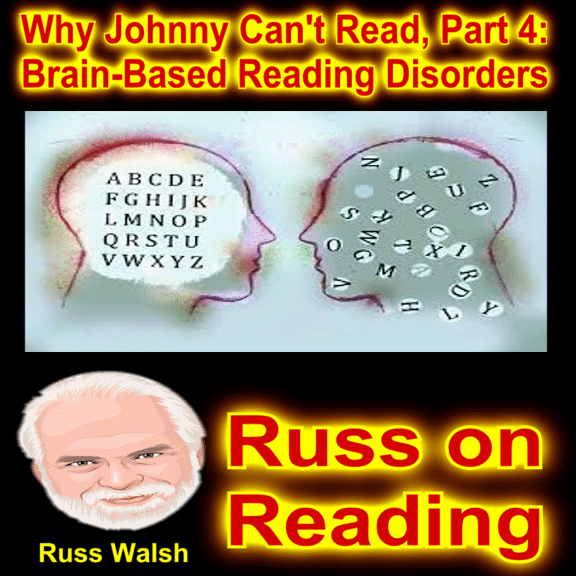Russ on Reading: Why Johnny Can't Read, Part 4: Brain-Based Reading Disorders
Why Johnny Can't Read, Part 4: Brain-Based Reading Disorders
The 4th in a series on vulnerable readers

The label many give these reading disorders is dyslexia. The label may be comforting to some, but according to the International Literacy Association, (ILA) the nature and causes of the difficulty, and even whether or not the label itself is helpful, are still matters that are under investigation. One problem with the dyslexia label is that there are many mythologies and misleading concepts surrounding the term. For example characteristics such as clumsiness, attention deficit, fine motor problems, creativity, or CONTINUE READING: Russ on Reading: Why Johnny Can't Read, Part 4: Brain-Based Reading Disorders


